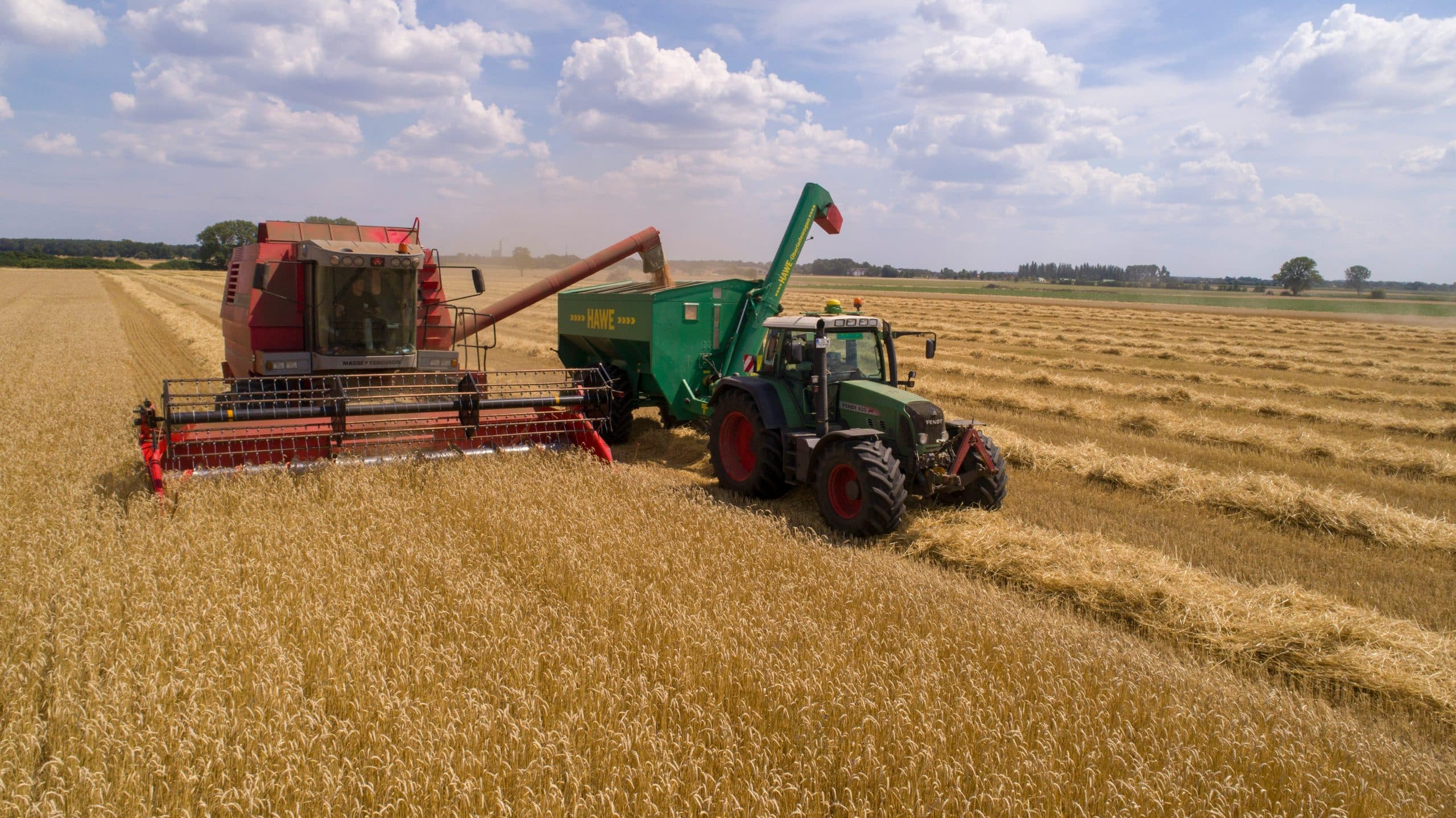The role of tech in sustainable agriculture

Addressing the myriad challenges facing the agricultural industry today, particularly in light of climate change and environmental concerns, calls for innovative solutions. The integration of modern technology into farming practices presents us with a promising pathway that is both practical and sustainable. Making agriculture more sustainable is no small task, but with the help of technology, farmers are finding new ways to increase yields, reduce waste, and safeguard the environment.
Harnessing Technology for Enhanced Crop Cultivation
The application of advanced technologies in the farming industry has significantly revolutionized the way crops are grown and harvested. These technologies have benefited the industry in various ways, from improving soil health and crop yield to providing efficient water management solutions.
A lire aussi : Tutorials and practical guides: use ChatGPT and exploit its full potential
The advent of precision agriculture, for example, has changed the game in crop cultivation. Through the use of GPS and remote sensing technologies, farmers can now monitor the health and growth of their crops in real-time, allowing them to make timely interventions, optimize the use of water and fertilizers, and ultimately increase productivity.
Drones, or Unmanned Aerial Vehicles (UAVs), have also found utility in agriculture. Equipped with various sensors, drones can provide farmers with accurate and detailed information about their fields, such as soil composition, crop health, and pest infestations. This enables farmers to make informed decisions about crop management and to target their resources more efficiently.
A lire également : What are the different types of artificial intelligence?
Advancing Soil and Water Management Practices
Agriculture’s dependence on natural resources like soil and water is undeniable. However, the traditional practices of soil and water management are proving to be unsustainable in the face of increasing global demand for food and the challenges posed by climate change. Thankfully, technology is stepping in to help bridge this gap.
Soil sensor technology allows farmers to gather detailed insights into the quality of their soil. By tracking variables like temperature, moisture, pH levels, and nutrient content, these sensors can help farmers make decisions that enhance soil health and boost crop productivity, all while reducing the overall environmental impact.
Similarly, technology is transforming water management in agriculture. Smart irrigation systems use data from weather forecasts and soil moisture sensors to accurately determine when and how much to irrigate, reducing water waste and ensuring crops get precisely what they need to thrive.
Implementing Renewable Energy in Farming
The agricultural industry is a significant consumer of energy, mainly from non-renewable sources. This energy consumption has both environmental and economic implications. To make farming more sustainable and cost-effective, the integration of renewable energy sources into agricultural practices is crucial.
Solar and wind energy technologies, in particular, are being increasingly adopted by farmers worldwide. Solar panels and wind turbines can supply farms with reliable, clean energy, reducing their reliance on fossil fuels. Furthermore, these systems can often generate surplus energy that can be sold back to the grid, turning farms into energy producers and providing an additional revenue stream.
Biogas technology, which harnesses the energy potential of organic waste, is another promising solution. By converting farm waste into a source of renewable energy, biogas systems not only provide a sustainable energy alternative but also help manage waste more effectively.
The Future of Agricultural Technology Development
Technological advancements have undeniably been a catalyst for progress in sustainable agriculture, but we are only scratching the surface. With ongoing research and development, the potential for technology to further transform the agricultural industry is immense.
Artificial Intelligence (AI) and machine learning, for instance, are being explored for their potential to automate and optimize various farming tasks. From predictive analytics for crop yields to robotic harvesters, these technologies can significantly reduce labor costs and improve efficiency.
However, the road to wide-scale adoption of these technologies is fraught with challenges. Issues such as high upfront costs, lack of technological literacy among farmers, and regulatory hurdles need to be addressed. Nonetheless, with appropriate policies, investments, and capacity-building, the promise of technology-driven sustainable agriculture can become a reality.
Bridging the Digital Divide: The Role of Farmers in Technology Adoption
While the benefits of agricultural technology are evident, the adoption rate among farmers, particularly in developing regions, is relatively low. One of the key challenges lies in bridging the digital divide and ensuring that all farmers, regardless of their location or size of operations, can access and utilize these technologies.
Education and training programs can play a crucial role in boosting farmers’ digital literacy. Providing them with the necessary skills and knowledge will help them understand the potential benefits of these technologies and how to effectively integrate them into their farming practices.
Moreover, it is essential to develop technologies that are farmer-centered and context-specific. Recognizing and addressing the unique needs and constraints of different farming communities will be instrumental in promoting inclusive and sustainable agricultural development.
In conclusion, while the marriage of agriculture and technology presents its share of challenges, the potential rewards are undeniable. With continued innovation, collaboration, and commitment, we can leverage technology to make agriculture more sustainable, resilient, and productive, ensuring food security for generations to come.
The Intersection of AI and Agriculture: Optimizing Sustainable Practices
Artificial Intelligence (AI) and machine learning are on the brink of revolutionizing the agricultural industry. The ability of AI to analyze large amounts of data and make accurate predictions is leading to transformative changes in farming practices.
AI is beginning to find its place in precision agriculture, optimizing farm operations by predicting the best times for planting, managing pests, and determining crop yields. Machine learning algorithms can analyze weather patterns, soil conditions, and plant health to give farmers real-time recommendations. This leads to improved decision-making, ultimately increasing efficiency and decreasing waste.
Robotic technology, another facet of AI, is also finding its way into the agricultural industry. From weeding and planting to harvesting and sorting, robots are beginning to take over labor-intensive tasks. This not only reduces labor costs but also increases precision, leading to higher yields and less waste.
While the benefits of AI in agriculture are numerous, there are also challenges to overcome. High setup costs, lack of understanding about the technology among farmers, and potential regulatory issues can hamper adoption. However, with continued research, knowledge exchange, and government support, these hurdles can be overcome.
Vertical Farming: A Game-Changer for Sustainable Agriculture
Another trend that is gaining momentum in the realm of sustainable agriculture is vertical farming. This innovative method of food production involves growing crops in stacked layers, often in controlled environments such as buildings or shipping containers. This approach to farming is particularly beneficial in urban settings, where land availability is limited.
Vertical farming leverages technology to create an optimal growing environment for plants. Using LED lighting, climate control, and hydroponic or aeroponic systems, plants can be grown year-round, irrespective of outdoor weather conditions. This means higher yields and more efficient use of space compared to traditional farming.
Moreover, vertical farming drastically reduces water usage, as the closed-loop system recycles water. This practice also eliminates the need for pesticides, as the controlled environments can be kept free of pests and diseases.
While vertical farming holds great promise, it is important to note that it is not without challenges. High energy costs and the need for specialized knowledge can be barriers to entry. However, the potential benefits in terms of sustainability and food security make it a promising avenue worth exploring.
Conclusion
The integration of technology into agriculture is a key driver of sustainable development. From precision farming and AI to renewable energy and vertical farming, technology is reshaping agricultural practices in a way that is both productive and environmentally friendly.
However, the journey towards fully embracing these green technologies is not without hurdles. Barriers such as high costs, lack of technical knowledge among farmers and ranchers, and regulatory challenges need to be addressed. It’s essential to bridge the digital divide and ensure technology transfer to all farmers, regardless of their location or scale of operation.
With commitment and collaboration from all stakeholders, we can overcome these challenges and realize the full potential of technology in agriculture. This will pave the way for a future where farming is not just about food production, but also about regenerative agriculture, preserving our environment, and securing food for generations to come.
